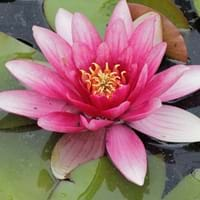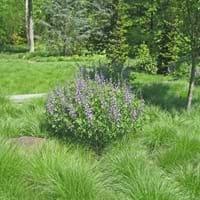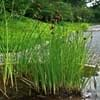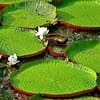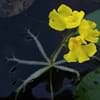Life Span
Perennial
Annual
Origin
World/Pandemic
North America, Northeastern United States, North-Central United States, Central United States, South-Central United States, Canada
Types
Not Available
Not Available
USDA Hardiness Zone
4-9
3-8
AHS Heat Zone
12-1
10 - 2
Sunset Zone
21,22
1a, 1b, 2a, 2b, 3a, 3b, 4, 5, 6, 7, 8, 9, 10, 14, 15, 16, 17
Habit
Not Available
Clump-Forming
Minimum Height
Not Available
Flower Color
White, Yellow, Red, Orange, Pink, Magenta, Fuchsia, Coral, Peach, Blue Violet, Ivory
Red, Green, Purple, Light Green
Flower Color Modifier
Bicolor
Bicolor
Fruit Color
Green
Not Available
Leaf Color in Spring
Green, Dark Green
Green
Leaf Color in Summer
Green, Dark Green
Light Green
Leaf Color in Fall
Green, Dark Green
Yellow, Orange, Gold
Leaf Color in Winter
Not Available
Tan, Bronze
Leaf Shape
Round
Grass like
Plant Season
Summer, Fall
Summer, Fall
Sunlight
Full Sun, Partial Sun
Full Sun, Partial Sun, Partial shade
Type of Soil
Clay, Loam, Sand
Clay, Loam, Sand
The pH of Soil
Neutral
Acidic, Neutral, Alkaline
Soil Drainage
Poorly Drained
Well drained
Bloom Time
Indeterminate
Late Summer
Tolerances
Wet Site
Pollution, Drought
Where to Plant?
In Water
Ground
How to Plant?
Stem Planting
Seedlings
Plant Maintenance
Medium
Medium
Watering Requirements
Plant grows in water
Medium
In Summer
Lots of watering
Lots of watering
In Spring
Moderate
Moderate
In Winter
Average Water
Average Water
Soil pH
Neutral
Acidic, Neutral, Alkaline
Soil Type
Clay, Loam, Sand
Clay, Loam, Sand
Soil Drainage Capacity
Poorly Drained
Well drained
Sun Exposure
Full Sun, Partial Sun
Full Sun, Partial Sun, Partial shade
Pruning
Remove damaged leaves, Remove dead branches, Remove dead leaves
Remove damaged leaves, Remove dead branches, Remove dead leaves
Fertilizers
All-Purpose Liquid Fertilizer
All-Purpose Liquid Fertilizer
Pests and Diseases
Not Available
Red blotch
Plant Tolerance
Drought
Drought
Flower Petal Number
Single
Single
Foliage Texture
Coarse
Fine
Foliage Sheen
Glossy
Matte
Self-Sowing
Not Available
Yes
Attracts
Fishes
Butterflies, Hummingbirds
Allergy
Not Available
Not Available
Aesthetic Uses
Showy Purposes, Water gardening
Ground Cover, Showy Purposes
Beauty Benefits
Not Available
Not Available
Environmental Uses
Air purification
Air purification
Medicinal Uses
Not Available
Not Available
Part of Plant Used
Leaves, Root, Stem
Leaves, Seeds
Other Uses
Can be made into a herbal tea, Culinary use, Used as Ornamental plant, Used in herbal medicines
Used As Food, Used as Ornamental plant
Used As Indoor Plant
Yes
No
Used As Outdoor Plant
Yes
Yes
Garden Design
Water Gardens
Container, Edging, Groundcover, Mixed Border, Wildflower
Botanical Name
NYMPHAEA 'Charles de Meurville'
SPOROBOLUS heterolepis
Common Name
Charles de Meurville Waterlily, Hardy Daylily
Prairie Dropseed
In Hindi
Hardy Daylily
prairie dropseed
In German
Hardy Daylily
Prärie Dropseed
In French
Hardy Daylily
prairie dropseed
In Spanish
Hardy Daylily
dropseed pradera
In Greek
Hardy Daylily
λιβάδι dropseed
In Portuguese
Hardy Daylily
pradaria dropseed
In Polish
Hardy Daylily
łąka dropseed
In Latin
Hardy Daylily
PRATUM grama
Phylum
Magnoliophyta
Magnoliophyta
Class
Magnoliopsida
Liliopsida
Family
Nymphaeaceae
Poaceae
Genus
Nymphaea
Sporobolus
Clade
Angiosperms
Angiosperms, Commelinids, Monocots
Tribe
Not Available
Not Available
Subfamily
Not Available
Not Available
Number of Species
Not Available
Difference Between Hardy Daylily and Prairie Dropseed
If you are confused whether Hardy Daylily or Prairie Dropseed are same, here are some features about those plants to help you choose better. Many people think that these two plants have the same characteristics, but one can see Hardy Daylily and Prairie Dropseed Information and learn more about it. Fertilizers required for proper growth of Hardy Daylily are All-Purpose Liquid Fertilizer, whereas for Prairie Dropseed fertilizers required are All-Purpose Liquid Fertilizer. Hence, one should know the basic difference between Hardy Daylily and Prairie Dropseed if you are planning to have them in your garden to enhance its beauty.
<
Flowering PlantsImportance of Hardy Daylily and Prairie Dropseed
Want to have the most appropriate plant for your garden? You might want to know the importance of Hardy Daylily and Prairie Dropseed. Basically, these two plants vary in many aspects. Compare Hardy Daylily and Prairie Dropseed as they differ in many characteristics such as their life, care, benefits, facts, etc. Every gardener must at least have the slightest clue about the plants he wants to plant in his garden. Compare their benefits, which differ in many ways like facts and uses. The medicinal use of Hardy Daylily is Not Available whereas of Prairie Dropseed is Not Available. Hardy Daylily has beauty benefits as follows: Not Available while Prairie Dropseed has beauty benefits as follows: Not Available.
Compare Facts of Hardy Daylily vs Prairie Dropseed
How to choose the best garden plant for your garden depending upon its facts? Here garden plant comparison will help you to solve this query. Compare the facts of Hardy Daylily vs Prairie Dropseed and know which one to choose. As garden plants have benefits and other uses, allergy is also a major drawback of plants for some people. Allergic reactions of Hardy Daylily are Not Available whereas of Prairie Dropseed have Not Available respectively. Having a fruit bearing plant in your garden can be a plus point of your garden. Hardy Daylily has no showy fruits and Prairie Dropseed has no showy fruits. Also Hardy Daylily is not flowering and Prairie Dropseed is not flowering . You can compare Hardy Daylily and Prairie Dropseed facts and facts of other plants too.
